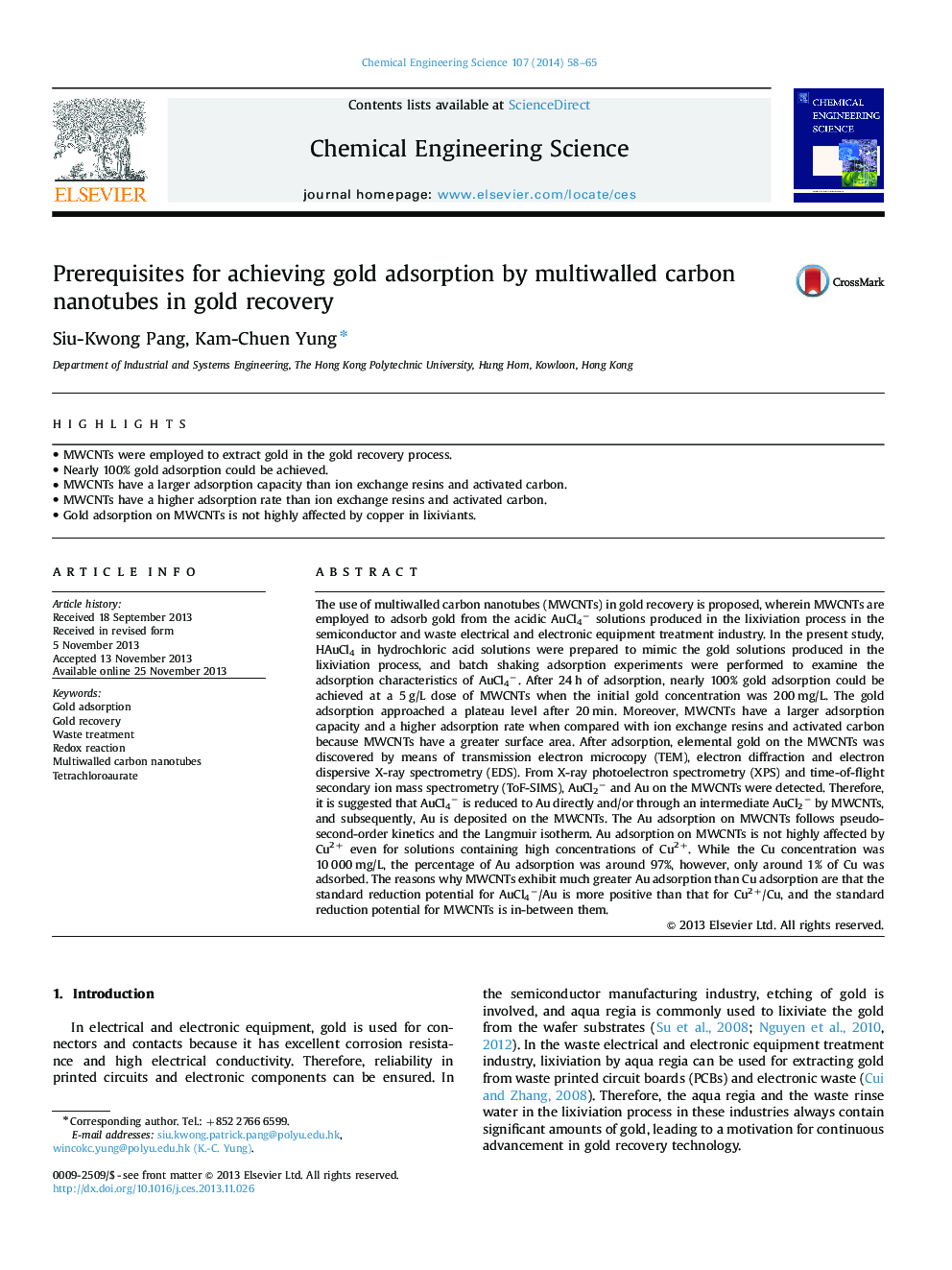| کد مقاله | کد نشریه | سال انتشار | مقاله انگلیسی | نسخه تمام متن |
|---|---|---|---|---|
| 154944 | 456875 | 2014 | 8 صفحه PDF | دانلود رایگان |
• MWCNTs were employed to extract gold in the gold recovery process.
• Nearly 100% gold adsorption could be achieved.
• MWCNTs have a larger adsorption capacity than ion exchange resins and activated carbon.
• MWCNTs have a higher adsorption rate than ion exchange resins and activated carbon.
• Gold adsorption on MWCNTs is not highly affected by copper in lixiviants.
The use of multiwalled carbon nanotubes (MWCNTs) in gold recovery is proposed, wherein MWCNTs are employed to adsorb gold from the acidic AuCl4− solutions produced in the lixiviation process in the semiconductor and waste electrical and electronic equipment treatment industry. In the present study, HAuCl4 in hydrochloric acid solutions were prepared to mimic the gold solutions produced in the lixiviation process, and batch shaking adsorption experiments were performed to examine the adsorption characteristics of AuCl4−. After 24 h of adsorption, nearly 100% gold adsorption could be achieved at a 5 g/L dose of MWCNTs when the initial gold concentration was 200 mg/L. The gold adsorption approached a plateau level after 20 min. Moreover, MWCNTs have a larger adsorption capacity and a higher adsorption rate when compared with ion exchange resins and activated carbon because MWCNTs have a greater surface area. After adsorption, elemental gold on the MWCNTs was discovered by means of transmission electron microcopy (TEM), electron diffraction and electron dispersive X-ray spectrometry (EDS). From X-ray photoelectron spectrometry (XPS) and time-of-flight secondary ion mass spectrometry (ToF-SIMS), AuCl2− and Au on the MWCNTs were detected. Therefore, it is suggested that AuCl4− is reduced to Au directly and/or through an intermediate AuCl2− by MWCNTs, and subsequently, Au is deposited on the MWCNTs. The Au adsorption on MWCNTs follows pseudo-second-order kinetics and the Langmuir isotherm. Au adsorption on MWCNTs is not highly affected by Cu2+ even for solutions containing high concentrations of Cu2+. While the Cu concentration was 10 000 mg/L, the percentage of Au adsorption was around 97%, however, only around 1% of Cu was adsorbed. The reasons why MWCNTs exhibit much greater Au adsorption than Cu adsorption are that the standard reduction potential for AuCl4−/Au is more positive than that for Cu2+/Cu, and the standard reduction potential for MWCNTs is in-between them.
Journal: Chemical Engineering Science - Volume 107, 7 April 2014, Pages 58–65
